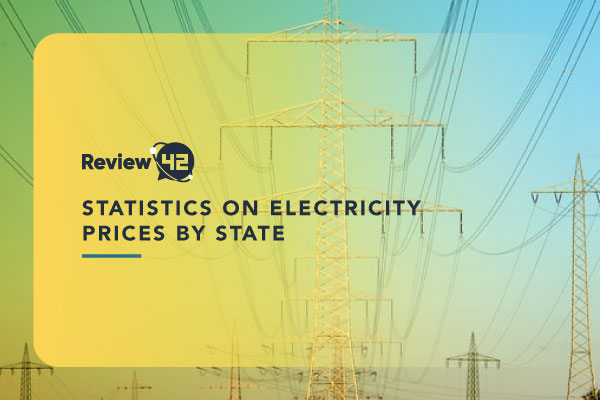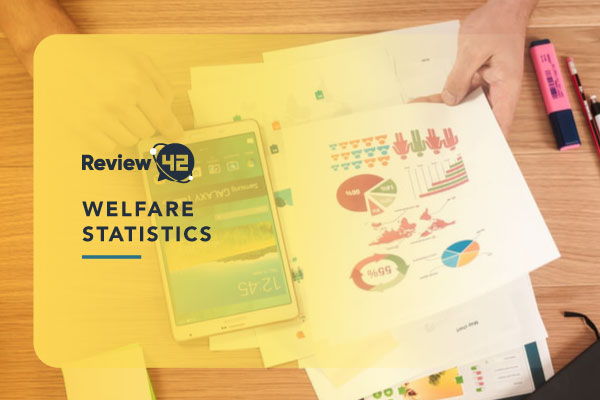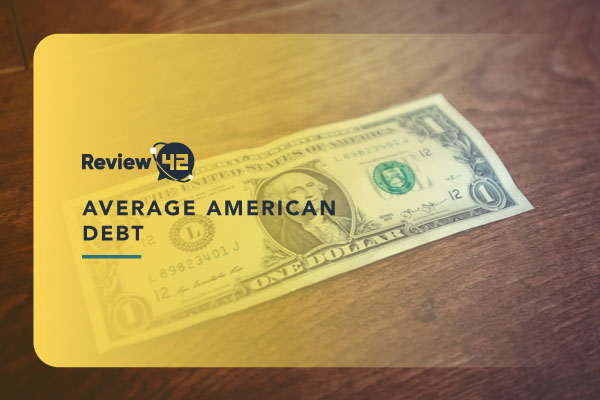Average Down Payment on a House [2024]
 Fact-checked
Fact-checked
Last Updated: February 13, 2024
While you were growing up, you probably dreamt about having the perfect home, complete with a large swimming pool and a fancy living room. When the right time comes around, though, we often stumble into different obstacles that seem to prevent us from fulfilling our wants.
Usually, the most challenging difficulty in all this is the financial investment; Besides the actual price of the home, the initial down payment is what seems to give most Americans a headache.
In this article, we’ll take a look at the average down payment on a house, the difference between buyer perception versus the actual real estate market, and how you can improve your chances of becoming a happy qualified homeowner.
Average Down Payment on a House or Apartment
In the following sections, you’ll find out what is the typical down payment, an average down payment on a house per state, and the percentage of average down payments for repeated and first-time buyers
What Is the Typical Down Payment on a House?
There is a good chance some of the first questions that cross your mind when thinking about buying a home include: How much is the average down payment for a house? How much am I willing to put down?
But first, we have to answer the following: what exactly is a down payment? Simply put, it’s a type of payment that most buyers have to make in the early stages of a purchase, and it’s calculated as a percentage of the full purchase price.
When trying to pinpoint the average down payment in the United States, Americans have different opinions depending on their propriety status. According to a report from the National Association of Realtors, the average down payment on a house for first-time buyers is just 7%, whereas repeated buyers put down an average of 16%.
As you can see, the standard down payment of 20% is less popular than the thought of in the US. According to one study regarding consumer perception, only two in five people actually believe that 20% is the minimum down payment for a house.
| Average Down Payment for Repeated Buyers | Year |
| 14% | 2017 |
| 16% | 2018 |
| 16% | 2019 |
| Average Down Payment for First-Time Buyers | Year |
| 5% | 2017 |
| 8% | 2018 |
| 7% | 2019 |
Average Down Payments on Houses per State
This widespread myth of 20% has discouraged many Americans from becoming homeowners. It’s important to keep in mind, however, that this average percentage varies in each state. A down payment on a house is influenced by many factors such as geographic location, currency fluctuation, percentage of the home price, and available loan programs.
Fortunately for a majority of American buyers, average down payments are actually lower than their expectations. The median percentage of down payments is only 5%, multiplying opportunities for people to get on the fast track of homeownership. Even though a potential mortgage down payment can be reduced with a high down payment, a lower down payment allows purchasers to save time and (present) money.
Some of the lowest down payments, when analyzed across all 50 states, have been found in Kentucky. In Kentucky, the down payments hover around 11.02% of the home price. On the other hand, Hawaii has the highest down payments not just in amount, but also in percentage. On that island, home buyers have to make an average monthly payment of 19.6% at $1,780 a month, which is almost $621 more than the national average median down payment.
Here’s a list of some more mortgage down payments by state:
| Average Down Payment | State |
| 11.02% | Kentucky |
| 12.31% | South Dakota |
| 13.55% | Alabama |
| 14.06% | Iowa |
| 15% | Alaska |
| 15.4% | Indiana |
| 17.8% | Arkansas |
| 18.5% | California |
| 18.6% | New York |
| 19.6% | Hawaii |
Minimum Down Payments on Different Mortgage Loans
Depending on the loan, the various minimum down payments for a house is available. In addition, prices may vary depending on the type of residence that you are buying, whether it’s a primary, secondary, or investment property.
USDA Loans
For this type of loan, no down payment is required; However, to be a qualified buyer with a USDA loan, the home you plan to purchase must be in a rural or suburban area. In addition, there are also income requirements that the members of your household have to meet to get a mortgage down payment reduction.
VA Loans
If you qualify for this loan, you can forget about the standard down payment. As a government-backed loan, the VA doesn’t require a down payment to qualify. However, your eligibility depends on some specific requirements, such as your length of service in the military as well as your discharge reason. This type of loan is for spouses of active military members or veterans who died in a service-related accident. For more information regarding VA loans and how you can apply to avoid the average mortgage down payment in your state, consult the official website of the Department of Veterans Affairs.
FHA Loans
Like VA loans, these are backed by the government. Instead of being down payment-free, however, it applies lower financial and credit requirements so that you can get closer to paying the minimum down payment for a house. The FHA down payment is 3.5% of the home cost; to qualify, you must meet the minimum credit score of 580.
Conventional Loans
Lately, the requirements for each type of residence under this loan depend on your credit score. If your credit score is above 620, it might help lower your payment. Keep in mind that though some lenders may require you to put 6% down, the minimum down payment for a house under a conventional loan is 3%. The better your credit score, the higher your creditworthiness will seem.
Benefits of Putting Down 20%
If you are a first-time homebuyer, the biggest challenges you face are likely to save enough money for a down payment and closing costs. One simple but effective solution to any potential burdens of debt is simply minimizing your monthly payment by paying the standard down payment of 20%.
Here are some of the main benefits of putting 20% down:
Lower Monthly Payment
Since your financial data can decide whether you had a good or bad month, it’s no surprise that reducing any monthly payments should be a priority for both first-time and repeated buyers.
The borrowed amount is proportional to the amount you are willing to put down; therefore, paying the standard down payment might help a lot. Consequently, if you can put down 20%, your loan will reduce considerably, meaning that a lot of money that would have been spent paying your lender can be redirected into savings or investments.
No Mortgage Insurance
Private mortgage insurance (PMI) represents the amount that a borrower has to pay to a private insurance company. It is mostly required on all conventional loans, and it’s meant to protect the lender in case you default on your mortgage.
The cost of mortgage insurance depends on the type of loan and the lender’s requirements, but it typically varies between 0.5% and 1% of the annual home loan balance. You can avoid paying this kind of insurance by putting the standard down payment of 20%.
Lower Mortgage Interest Rates
Most lenders charge loan borrowers monthly. In these cases, the percentage of principal or outstanding balance represents the mortgage interest rate. Like the others, this rate can be reduced by paying a higher mortgage down payment depending on the lender. Lenders pay a lot of attention to any risks they are taking with each purchaser, especially for a first-time homebuyer. To protect themselves, they want to make sure that someone is financially stable.
Higher Chances of Getting a Mortgage Loan
Paying the standard down payment helps show your lender that he can trust you; the lender measures their risk through a loan-to-value ratio (LTV). The bigger your down payment is, the less risky you are considered. Lenders increase mortgage interest rates to reduce potential risks, so putting more money down could lead to being considered a qualified buyer with a smaller mortgage rate. A larger down payment, therefore, helps you increase your chances of getting the mortgage that you want by reducing your LTV.
Better Mortgage Loan Terms
Getting better mortgage loan terms or, in other words, reducing mortgage insurance premiums, can be achieved by combining good credit history with consistent standard down payments. The number of your down payments influences multiple things, such as the size of your mortgage insurance, the period over which you have to pay it, and your premium costs.
How to Save Money for a Down Payment
Since putting money down for the standard down payment comes with obvious benefits, it’s highly recommended that you focus on saving money. The average American spends years saving to qualify for lower loans and reduced monthly payments; here are some tips to help speed up the process of becoming a qualified homebuyer.
Think About the Amount You’ll Need
First, you need to set a saving goal. To accomplish this, you need to know exactly how much you need to afford your potential home, including the mortgage down payment, closing costs, and home price.
Devise a Monthly Budget
Don’t only plan out your savings, but also your spendings. After setting your financial goal, create a budget that you can realistically stick to and adjust each month according to your needs. Using this tactic, you will be able to track the amount of extra cash you have while viewing any opportunities for reducing expenses.
Cut Unnecessary Spending
We know that cutting out unneeded purchases sounds like an old cliché, but we wouldn’t mention it if it weren’t so effective. Here are some expenses that you could consider getting rid of:
- Take a break from the gym
- Save eating out for special occasions
- Buy clothes only when you need them
- Stop purchasing premium grocery store brands
- Cut out television cable
For some, these changes may help save up to $630 monthly – this means about $15,000 over a year! However, these are suggestions only, so feel free to add or subtract depending on your needs.
Save Money With a Savings Account
The last step towards turning your dream home into a reality is opening a savings account. This is another simple but effective step in managing funds since the only thing you need to do is add money periodically in order to gain interest on the account, furthering your savings. Just make sure you don’t withdraw the money until you plan to apply for your down payment.
The Bottom Line of a Typical Down Payment on a House
The average down payment on a house in the United States is only around 5% of the borrower’s loan value. Nonetheless, there are several opportunities that might help you become a homeowner with no down payment depending on the type of loan you qualify for. Even those with bad credit can do it. Keep in mind that minimum down payments depend on what loan type you receive, and this variation could be influenced by your credit score, mortgage rate, and LTV ratio.
FAQ
For better mortgage rates and terms, it is recommended to make a down payment of at least 20%. However, the average down payment on a house in America is 5%. The majority of American first time home buyers put 7% down or even less, whereas for repeated home buyers the average mortgage down payment is around 16%.
Yes, it is. By putting 20% down on your home, you can decrease your monthly payment to avoid paying mortgage insurance or lower your mortgage interest rates. Paying the 20% also increases your chances to gain the trust of a lender, offering you an opportunity to negotiate better loan terms.
Because paying more than the average down payment on a house has many benefits, you NEED to start saving money. Here are two pieces of advice: you should try assuring your employment stability, and think about the debt-to-income ratio you possess before making any important investment decisions.
Sources
1 Comment
Leave a Reply
You must be logged in to post a comment.
![How Many Marriages End in Divorce [Fascinating Facts and Stats]](https://review42.com/wp-content/uploads/2022/07/How-many-marriages-end-in-divorce.png)
![How Much Do Flight Attendants Make? [Latest Data for 2024]](https://review42.com/wp-content/uploads/2022/06/feature-image-56-how-much-do-flight-attendants-make.jpg)
![How Many Websites Are There? [2024’s Data]](https://review42.com/wp-content/uploads/2022/05/feature-image-55-how-many-websites-are-there.jpg)

![Average Gas Prices by State in the US [2024 Data]](https://review42.com/wp-content/uploads/2022/03/feature-image-51-average-gas-price-by-state.jpg)





soundos
December 29, 2021 at 10:45 am
– Thank you very much for this valuable information